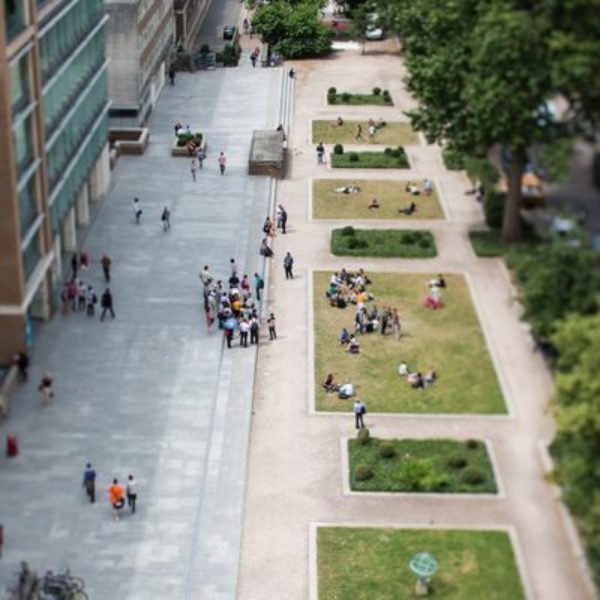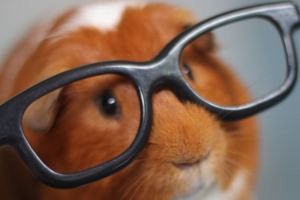
| Date | Author |
|---|---|
| 19th July 2021 | Claire Taylor MBE |
In a series of posts, SUMS has been exploring ways of working that, while established in response to the pandemic, may serve us well when Covid-19 has long faded from the rear-view mirror. Today’s post from SUMS Managing Consultant Claire Taylor MBE explores the increasing demands to re-think the ways we use our space, post-pandemic. It follows on from last month’s post which explored the changing requirements of technology. If technology gives us opportunities to change the way we work, what does that mean for the places in which we work?
I’ve long been interested in the combination of place and purpose: how the type of space impacts the way we use it, the way we interact within that space, and what we can achieve in that space. Conversely, of course, purpose influences space through design, build and outfitting. Aligning purpose and place are important, but effectiveness must always be balanced by the efficiency of use: a high level of specificity will limit the broader use of space.
Covid has shown us – necessity being the mother of invention – how technology can enable new ways of working. If work becomes something that we do, not somewhere that we go, how do we analyse the requirements of the spaces in which we now work?
Demand by Activity Analysis
In workshops with members of staff from across our member universities, we discussed the activities they might do during an average working week. These differ by role, but some activities shared sets of needs:
- Things which could only be done with specialist equipment (e.g. research)
- Things that required quiet contemplation (desk-based research, meeting preparation)
- Making phone or video calls
- Meeting with 1 or 2 others: sometimes confidential or sensitive, sometimes not. E.g. student counselling or personal tutor meeting, appraisal
- Meeting with 3 or more others e.g. team meeting, project meeting, workshop
- Checking and responding to emails or other communications
- Providing a location-specific service (e.g. sports, catering, security).
We explored the purpose of these activities and whether they required things like the same place, same time, specific time, specific place and so on. The aggregation of this information is essential for the growing band of strategic space managers to plan the university estates of the future.
Some characteristics will be related more to personality than purpose. Our extroverts preferred to find a table in a busy coffee shop, surrounded by people and conversations. They wanted to work in an environment that stimulated them. Our introverts preferred a quiet space, to reflect on past meetings and to prepare themselves for future gatherings.
In universities there will always be activities that require specialist equipment e.g. wet labs, dry labs, creative arts, heavy engineering, sports activities; here, the place is mandated by where the equipment is. Institutions must find flexibility in ownership and management to ensure this specialist space is regularly used throughout the year.
Non-specialist space will be driven by the balance of other activities. Lots of organisations in other industries have moved to open-plan office environments. A number of universities have moved professional services staff to this environment but there has been resistance to a similar move for academic staff.
Academic Space as Status
There is still a lot of debate about the academic office and plans to move academics into an open plan. Explicit reasons given for not moving academics include the need for somewhere to store books and paper-based research materials, somewhere to meet students, early career researchers or colleagues for 1:1s, and a quiet space to think. However, the academic office has been – and is still – a key part of the academic identity and a totem of the promotion pathway in most disciplines. The academic is often viewed as an individual knowledge worker, not just another employee of the institution.
Where US and UK institutions have implemented shared working spaces, concerns were reported about the overlap of social and working spaces. The need for quiet contemplation set against the distractions of colleagues making phone calls and – God forbid – eating lunch at their desks.
Homeland
Those working from home over the past 15 months have had varying experiences. Those who are privileged have had access to a spare room, a decent chair (perhaps brought home from the office), screens, keyboards and resilient broadband. Academics reported taking their offices with them, prioritising key books and papers; the recreation of one space in another.
Academics experience privilege not just in space and equipment, but perhaps also in balancing the other inhabitants of those spaces and their demands on it – they may not have the same demands on the home space as others. The experience of the past 18 months has exacerbated other inequalities to – notably gender and age. For those without decent broadband, without specific space to work, with too many distractions and demands on their time and energy, the move back to the university cannot come quick enough.
But looking to the future, how do we plan for an estate where around 50% of our collective working days might be undertaken in workers’ homes? In a recent presentation to university heads of procurement, I explored the impact of new ways of working on sustainability, on supply chains and on resilience in service delivery. Are there things that the university can do to ensure their employees’ homes are good workplaces? Can they mandate the quality of broadband, adherence to DSE policies and practices, efficiency in energy use? And if 50% of working days are away from campus, what does this mean about the efficiency of campus-based services? How will we respond to reduced demand for catering, gym facilities, and specifically negotiated contracts with local transport providers etc.? And can that guarantee equity of opportunity for diverse staff?
Flexibility
Universities need to think about the flexibility of space in many ways. At the micro-level, universities need to:
- Respond to hundreds or thousands of individual choices about the spaces that people want to use for various activities: home or work for employees, home or lecture theatre for students. How do we right-size our spaces when demand is so volatile?
- Respond to hundreds of academic choices about how to use teaching spaces: partitions to change a space for 50 into 4 spaces for 10 people; furniture which supports both a lecture-style approach for 50 and 8 groups of 5 collaborating.
- Explore the use of non-traditional spaces for teaching and social learning.
At the macro level, we must consider flexible use of whole buildings over a longer time frame. If spaces are used more efficiently, what might that mean for the university?
- Can we expand particular discipline areas? Teach more students, conduct more research?
- Can we repurpose parts of a building for enterprise or innovation spaces?
- Can we repurpose a whole building?
Space as Money
For most UK HEIs, the university estate is the second-largest aggregated cost after staff. Space can represent income or expenditure, direct or indirect. For those space-tight city centre institutions that are hiring space to fulfil teaching commitments, space is a direct cost. Some universities have included space as an indirect operating cost, allocating the total cost of the estate to departments based on use. For city-centre institutions, efficient space use can result in reduced hire charges or even relinquishing whole leased buildings. For campus-based institutions, efficient space use can either lead to a reallocation of space to other activities, delivering either mission-based outcomes or potentially hiring out space to other entities.
Virtual Spaces
Can we think about virtual spaces in the same way as we do physical spaces? Our senses won’t work in two dimensions as they do in three dimensions. A recent conversation reminded me of the book Flatland, a treatise on dimensionality, written pseudonymously by A. Square in 1888. The hero of the book, conditioned to only sense two dimensions, was enlightened by the visit to Flatland of a sphere, who introduced him to a third dimension and more.
For those of us conditioned to think in three physical dimensions, the virtual landscape can be confusing and scary. Do we limit ourselves by only re-imaging the physical in virtual, a direct translation of one to the other? Or do we let ourselves be led and enlightened by others, who have explored the new opportunities and can help shine a light on these new uplands?
Universities will need to invest in the virtual landscape in order to deliver against their mission in a hybrid environment. This may necessitate, for some, additional efficiencies in the use of the physical space. Understanding the underlying dependence on the physical and meshing this with the opportunities of the digital requires cross-functional working and understanding.
If you would like support from SUMS in exploring how best to meet the evolving space requirements at your university, please contact Claire at s.c.taylor@reading.ac.uk.Our next blog will explore the cultural impact of the pandemic on ways of working – coming in August!
As Managing Consultant at SUMS, Claire Taylor MBE helps universities identify effective and efficient solutions to complex organisational issues. Her specialist areas of knowledge include timetabling and curriculum development, space management, IT strategy, integrated planning, payment acceptance and the development of sport strategies and operational plans.








